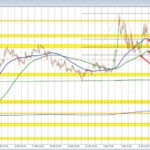Navigating Currency Volatility: The Impact of Trump’s Tariffs
Tháng 4 9, 2025
EURUSD Analysis: Navigating Trends and Geopolitical Influences for Strategic Trading
Tháng 4 9, 2025Understanding the White House’s New Tariff Policy: Implications and Reactions
The recent announcement from the White House to implement a 10% baseline tariff on imports from all countries, effective April 5, 2025, marks a significant shift in U.S. trade policy. This decision aims to address trade imbalances while raising revenue. However, the application of these tariffs will come with specific conditions, particularly concerning neighboring countries Canada and Mexico.
The General Tariff and Its Implications
Starting April 5, 2025, a 10% baseline tariff will apply to all imports into the United States. This move is designed to reinforce American manufacturing by discouraging foreign goods that contribute to trade deficits. The announcement emphasized that higher reciprocal tariffs will be instituted for countries that maintain substantial trade deficits with the U.S., set to go into effect just a few days later on April 9, 2025. This strategy aims to create a more balanced trade environment, encouraging foreign nations to reconsider their pricing strategies and production processes to mitigate the impact of these tariffs. Notably, China’s President Xi Jinping has recently convened top global CEOs to address such trade tensions, signaling China’s commitment to fostering international stability despite ongoing tariffs. For more insights on the implications of leadership on global trade relations, see this article on three strategic moves by China Xi.
Special Considerations for Canada and Mexico
While the new tariff policy appears straightforward, nuances come into play regarding Canada and Mexico due to existing orders under the International Emergency Economic Powers Act (IEEPA). These two nations, being integral parts of the United States-Mexico-Canada Agreement (USMCA), have specific exemptions. Goods compliant with USMCA agreements will be completely exempt from the 10% tariff, fostering the importance of regional trade compliance.
However, the situation is more complicated for goods that do not meet these compliance standards. Non-compliant goods from Canada will face a substantial 25% tariff, while the tariff on energy and potash imports from Canada will remain at 10%. Should the current IEEPA orders be lifted, any non-compliant goods could face a 12% tariff. These varying rates indicate a complex balancing act designed to encourage countries to adhere to established trade agreements while still imposing penalties for non-compliance.
Canada’s Response and the Outlook for Mexico
In reaction to the newly announced tariffs, Canada has already indicated potential retaliatory actions. The specifics of these actions remain to be fully outlined, but the intention to impose countermeasures highlights significant tensions in the U.S.-Canada trade relationship. Conversely, Mexico has not yet announced its response, leaping into uncertainty over how its trade relations with the U.S. will evolve in light of these changes.
The implications of these tariffs extend beyond immediate economic adjustments. They also represent a strategic rethinking of how the U.S. navigates its trade relationships. By implementing a phased approach to tariffs and allowing for exemptions for compliant goods, the administration appears to be seeking an equilibrium that encourages compliance with trade agreements, supports American industries, and maintains constructive relationships with key trading partners.
In conclusion, the White House’s newly announced tariffs will initiate significant shifts in U.S. trade policy, aimed at reducing trade imbalances and fostering compliance with existing agreements. Observers from both the economic and diplomatic spectrums will watch closely as these policies unfold, particularly in response from Canada and Mexico—a development likely to shape the U.S. trade landscape for years to come.
